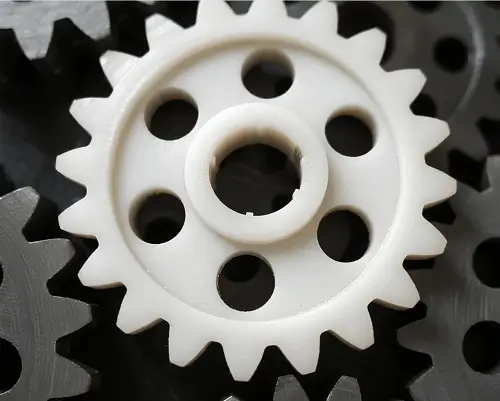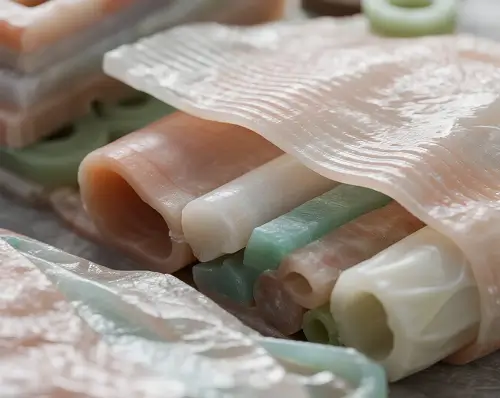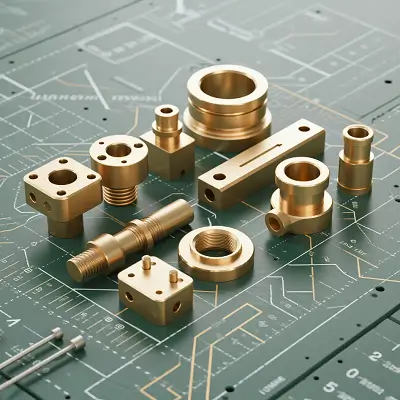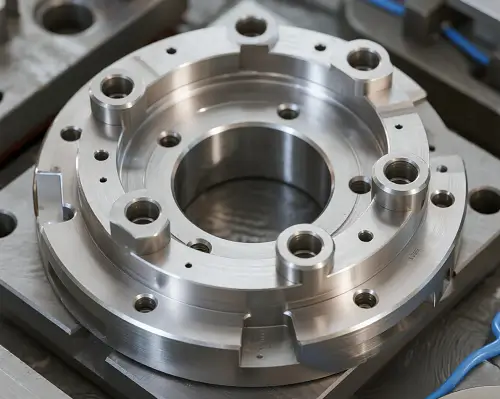People often talk about plastic as if it’s a single material, but in reality, plastics come in a wide variety of forms—some flexible, some rigid, some cheap, and some engineered for extreme environments. Nylon is one of those materials that tends to confuse people. It’s tough, durable, and used in everything from zippers to car engine components. But is nylon a plastic? Technically, yes—but it’s more than that. This article breaks down what nylon really is, how it compares to other types of plastics, and why understanding the difference matters, especially in manufacturing and product design.

What Is Nylon?
Nylon is a synthetic polymer, first developed by DuPont in the 1930s. Nylon belongs to the polyamide family of materials, which are defined by repeating amide bonds within the molecular structure. As the first commercially successful thermoplastic polymer, nylon significantly influenced the development of high-performance synthetic materials for industrial use.
In engineering contexts, nylon is classified as an engineering-grade thermoplastic. Nylon is widely recognized for its combination of mechanical strength, stiffness, fatigue resistance, and chemical durability. These properties make nylon a preferred choice for components that require long-term reliability under load, particularly in sectors such as automotive, industrial automation, and consumer electronics.
Types of Nylon Materials
Multiple grades of nylon are available to suit different mechanical and environmental requirements. Nylon 6 and Nylon 6,6 are the two most commonly used types. Nylon 6 exhibits greater flexibility and impact resistance, while Nylon 6,6 provides improved thermal stability and tensile strength, making it more suitable for high-heat environments.
Nylon 12 is often selected for applications requiring minimal moisture absorption and enhanced chemical resistance. Glass-filled nylon incorporates reinforcing glass fibers, significantly increasing dimensional stability and stiffness, which is particularly beneficial for load-bearing parts. Cast nylon is produced through a monomer casting process and is ideal for large, heavy-duty components that require high wear resistance and lower internal stress.
Each grade of nylon offers a specific set of properties, allowing engineers to tailor material selection to the demands of the application.
Key Properties of Nylon
Nylon demonstrates a strong balance of mechanical and thermal characteristics. Materials within the nylon family typically provide high tensile strength, excellent wear resistance, and superior fatigue performance. The low coefficient of friction allows nylon components to function efficiently in sliding and rotating assemblies.
Thermal resistance varies by grade, but most nylons maintain dimensional integrity at elevated temperatures. Chemical resistance is also a key advantage, particularly in contact with oils, greases, fuels, and cleaning agents.
However, nylon materials tend to absorb moisture from the environment, which can lead to slight dimensional changes or variations in stiffness. Proper design considerations and material selection can mitigate these effects, especially in high-precision applications.
Advantages and Disadvantages of Nylon
The primary advantages of nylon include excellent strength-to-weight ratio, long-term fatigue resistance, and adaptability to machining and injection molding processes. Nylon is lighter than metal and more durable than most commodity plastics, making it well-suited for structural components, gears, and bushings.
On the downside, nylon is hygroscopic, meaning it readily absorbs moisture, which may affect part tolerances in humid environments. UV resistance is relatively low unless stabilizers are added. Brittle behavior can also occur at very low temperatures. In addition, nylon is generally more expensive than materials like polypropylene or polyethylene.
These trade-offs must be carefully considered during the design phase, especially when components are intended for harsh or variable environments.
Common Applications of Nylon
Nylon is used extensively in applications where mechanical load, abrasion, or movement are present. In the automotive industry, nylon serves in intake manifolds, fuel system components, and cable housings. In consumer electronics and tools, nylon is often used for enclosures, fasteners, and functional parts that must withstand repeated use.
Industrial machinery frequently incorporates nylon in rollers, spacers, and bearing surfaces due to its low-friction behavior. In the textile sector, nylon is utilized in the form of fibers for straps, zippers, and technical fabrics. Each application leverages nylon’s specific strengths, such as dimensional stability, chemical resistance, and long service life.
JeekRapid manufactures high-performance nylon components for a wide range of industries, ensuring precise tolerances and consistent material behavior through CNC machining and injection molding.

What Is Plastic?
Plastic refers to a broad class of synthetic or semi-synthetic materials composed primarily of polymers. These polymers can be molded or shaped when heated, which allows plastic materials to serve in a wide variety of structural and decorative roles. The term “plastic” encompasses hundreds of polymer families with distinct chemical structures and performance profiles.
Plastics are generally lightweight, corrosion-resistant, and electrically insulating. These properties, combined with high-volume manufacturability, have made plastics a cornerstone of modern product development across industries. In technical terms, materials like polyethylene, polypropylene, ABS, and nylon all fall under the plastic category, although performance and use cases vary widely between them.
Major Types of Plastics
The most widely used plastics include commodity materials such as polyethylene (PE), polypropylene (PP), and polystyrene (PS). These polymers are typically chosen for low-cost, high-volume applications such as packaging, containers, or household items. Acrylonitrile butadiene styrene (ABS) is a tougher material, often used for enclosures, automotive interior parts, and consumer electronics.
More advanced polymers—such as polycarbonate (PC), polyetheretherketone (PEEK), and nylon—fall under the category of engineering plastics. These materials are designed for demanding mechanical and thermal environments. For example, polycarbonate offers high impact strength and optical clarity, while PEEK performs in extreme temperatures and chemical exposure.
Each type of plastic offers specific performance attributes, and the selection process depends on the mechanical load, thermal conditions, cost targets, and expected product lifecycle.
Key Characteristics of Plastics
Most plastics share several baseline characteristics: low density, ease of fabrication, resistance to moisture and many chemicals, and compatibility with high-speed molding processes. Plastics can be formulated to be rigid or flexible, opaque or transparent, and flame-retardant or UV-stable depending on the additive package and molecular structure.
However, not all plastics provide sufficient strength, stiffness, or temperature resistance for structural applications. Many commodity plastics deform under prolonged heat or mechanical stress. In contrast, engineering plastics like nylon offer enhanced mechanical integrity, though often at a higher material and processing cost.
When comparing materials, it is critical to evaluate not only baseline mechanical properties, but also long-term behavior under environmental exposure, load cycling, and contact with chemicals.
Advantages and Disadvantages of Plastics
The primary advantage of plastics lies in their design flexibility and cost efficiency. Injection molding enables complex geometries and large-scale production with relatively low unit cost. In many cases, plastic components can replace metal parts to reduce weight and simplify assembly.
Plastics also offer inherent corrosion resistance and electrical insulation, making them useful in harsh environments or electronic systems. However, many plastics exhibit limitations in mechanical strength, thermal stability, or environmental durability. Degradation from UV exposure, cracking at low temperatures, and incompatibility with certain solvents are common failure modes.
Proper material selection and part design are essential to ensure plastic components meet performance targets without sacrificing reliability or safety.

What’s the Difference Between Nylon and Other Plastics?
Nylon distinguishes itself from many general-purpose plastics through its superior mechanical performance. Unlike polyethylene or polypropylene, nylon maintains tensile strength and stiffness under higher loads and elevated temperatures. The inherent wear resistance and fatigue endurance of nylon make it suitable for components that experience motion or repeated stress, such as gears, bushings, and structural housings.
Moisture absorption is a notable trait of nylon, which can lead to dimensional variation over time. This behavior contrasts with most commodity plastics, which are largely hydrophobic. In terms of cost, nylon is more expensive than materials like ABS or HDPE, but the added performance often justifies the investment in high-demand applications.
Understanding these distinctions is critical during the material selection phase, particularly when balancing performance, durability, and cost-efficiency.
How Nylon and Plastics Complement Each Other in Manufacturing
Nylon does not compete with other plastics in every application—it often complements them. Many complex products rely on multi-material assemblies where different plastics are chosen based on their specific strengths. Nylon may be selected for internal components that require mechanical durability, while ABS or polypropylene may serve as external housings or decorative covers.
In hybrid designs, combining multiple types of plastic can improve manufacturability, reduce costs, and enhance product performance. Engineering teams often pair nylon with elastomers or softer polymers to address impact, sealing, or thermal isolation needs. The key is to understand the mechanical and chemical interaction between these materials to ensure compatibility during processing and service life.
Why Choose JeekRapid for Nylon and Plastic Part Production
JeekRapid provides advanced prototyping and short-run manufacturing solutions using both engineering-grade and commodity plastics, including nylon, ABS, polycarbonate, and others. With extensive expertise in CNC machining and injection molding of nylon 6, nylon 6/6, and glass-filled materials, JeekRapid ensures consistent precision and durability across all parts.
Whether the project requires tight-tolerance functional prototypes or production-grade parts, JeekRapid supports material selection, design optimization, and manufacturing planning from concept to delivery.
While Nylon is widely used in gears, bushings, and consumer products, many engineers also compare it with Delrin when evaluating CNC machining materials. For a detailed comparison, see our Delrin vs Nylon CNC machining guide.
To explore nylon-specific capabilities or receive a fast quote, submit an RFQ here or contact the JeekRapid engineering team to discuss your requirements.
FAQ: Nylon vs. Plastic – Quick Answers
Q1: Is nylon considered a plastic?
Yes. Nylon is an engineering thermoplastic within the polyamide family, used widely for its mechanical strength and resistance to wear and fatigue.
Q2: What distinguishes nylon from other plastics?
Nylon offers higher tensile strength, heat resistance, and wear performance compared to common plastics like polypropylene or ABS. Moisture absorption is a unique characteristic of nylon that must be managed during design.
Q3: Can nylon be injection molded?
Yes. Nylon is suitable for injection molding and is often used in applications requiring dimensional accuracy, structural integrity, and longevity.
Q4: Is nylon recyclable?
Certain types of nylon, such as nylon 6, are recyclable. Recycled nylon is commonly used in automotive parts, textiles, and industrial components.
Q5: When should nylon be used instead of other plastics?
Nylon is preferred in parts that are subject to continuous motion, mechanical stress, or elevated temperatures—such as gears, bearings, and enclosures under load.
Q6: Does JeekRapid support production with nylon?
Yes. JeekRapid specializes in CNC machining and injection molding of nylon parts, including glass-filled grades and high-precision geometries.


